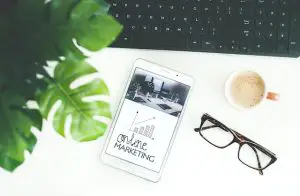A simple 5-step process is all you need.
Today starting a company is something that anyone can do with a laptop and an internet connection. Nonetheless, many newborn entrepreneurs fail to understand what entrepreneurship entails. In many cases, the lifestyle of an entrepreneur is glorified and seen as the maximum expression of an individual’s potential, alluring many talented individuals into the world of startup incubators, venture capital and minimum viable products.
Unfortunately, most of them don’t have any idea of the toll that starting a company takes on your personal life and as a result, the journey can end in disappointment and frustration.
It doesn’t have to be this way. Here at 440 Industries, we have a strong market orientation and we believe that your audience comes first. Only once you built a community around your vision and values you can begin to understand what products and services you should be developing to bring your mission to fruition.
If you’re patient and you’re happy to take the time to follow our strategy, we believe that it can lead to a lot less financial risk and big rewards. In this post, we’re going to tell you all about it, in the form of a 5-step strategy.
1. Learn to follow, if you want to lead.
2. Foster a community.
3. Engage your audience and develop a product.
4. Test your product via crowdfunding.
5. Market like there is no tomorrow.
Conclusions
Step 1. Learn to follow, if you want to lead
Building a digital business is about building your own brand. Building a brand requires market knowledge and field expertise. This is why your first goal should be collecting information about your industry, and understanding who are the most influential voices that people listen to.
Studying influencers is essential to understanding your business and achieve the following goals:
- Understand who are the most influential voices in your industry. Listing and mapping the influencers in your industry can provide with a ballpark figure of the size of your market. By understanding the ‘tones of voice’ used by authorities in your field you will be able to gather data regarding your audience and tailor your content so that it can be useful for a similar, if not overlapping audience.
- Defining your ‘Unique Selling Proposition’. Influencers can help you to identify a variety of value propositions which are already offered in the market and identify where you can position your own niche of expertise.
Influencers may look like strangers at first, but may later become part of your own community. Not far from now, it’s likely that they will follow you, but first, you need to follow them and contribute to their community.
Our advice is to start by creating a meaningful, honest conversation. Share their content, comment, like, subscribe, interact and make yourself noticed. If you start delivering value to their platforms, you are likely to get noticed and in time build a relationship.
Let’s see a few extra tips:
- How can you bring this one step further? It’s simple, try enrolling in Patreon and support the influencers and content creators you love financially. As an added bonus you’ll be able to figure out how monetisation streams work if you spend your own money! We also recommend backing Kickstarter projects for the very same reason: figuring out the best practices to a product funded. We strongly believe that you cannot lead effectively if you have never been a follower, plus following other people’s journey will allow you to learn a lot!
- Consider all of this initial outreach effort as market research. Market research is necessary to make informed decisions and developing strategies that work in real life. The more you try things for yourself, the more you will be able to realise the professional standards you need to match in order to be competitive in your industry.
- Your business relationships are long term company assets. Relationships can take years to form, but it’s essential to keep expanding your network as your business grows over time. Despite being an intangible asset, your network is one of the most valuable assets you can create for your organisation. Take your time before moving ahead to the next step in our strategy, investing in connecting with influencers is essential for your long-term success.
When you’ll feel that you’ve gone above and beyond, you can move ahead and build your own online community. More details about this stage will be discussed in the next paragraph!
Step 2. Foster a community
Now it’s time to build your own community. After following, interacting and engaging with online users you will have developed a stronger awareness of your own ideas and opinions. This is an essential step towards creating your own voice and identifying what problem you want to solve for your customers. As you approach this step, you may want to consider the following advice:
- Find out what type of platform better fits with your own message. Depending on your own personality and the type of information you are delivering, choose the platform that delivers your message in the most effective way possible. As you design your ‘message format’ you need to realise if you are going to deliver more value through spoken word, written word or images. Look for a balance between content and form as they are both equally important for your audience.
- Don’t disregard new and upcoming platforms. Don’t limit yourself to the most established platforms, being an early entrant into a new social platform can provide you with many advantages: your viewership will grow with the platform itself, experiencing much less competition that other, more established platforms.
This is where you can start building your own web presence via Youtube, Facebook, Instagram and so forth. Start lean, don’t invest, you have no need for it. It’s very easy to get involved with all sorts of shortcuts, but remember that the number of followers or subscribers is nothing more than a vanity metric. It’s much better to build your following organically and have fewer, loyal audience members rather than huge unresponsive crowds.
At this stage, all you need is already provided to you for free. You ‘only’ need to focus only on providing value by fostering interactions and meaningful conversations. Build on what you know, you are already enough.
Beware! Creating a blog, or any other type of web presence, requires consistency and attention to detail, and this means that by the time you reach this stage you can consider this project at least a part-time job.
- The keyword in this stage is authenticity. The more honest, passionate and open you are the better you will do. One of the founding values of the internet is the ability to match content creators (like yourself) with a niche, wherever they may be. If you succeed in building a community, it will be all downhill from there.
How long does it take? Years. No kidding.
How long before moving to the next step? As long as you can afford it.
Moving ahead, let’s consider this. The reason you want to build a product or provide a service is that you want to help people out and solve a problem they are experiencing in their lives. From a business perspective, however, there are two problems to solve, the first is to develop a product people will be interested in, the second is actually getting them to pay for it. These are two separate challenges which will be addressed in step 3 and step 4 or our 5-step strategy. Again, before moving ahead make sure that you build a large enough community. Ideally, we’re talking about 1,000 followers on social media, or 10,000 monthly pageviews if you are starting a blog.
Step 3. Engage your audience and develop your product
If you’ve done all the hard work so far, you will have a clear idea of the battlefield. You are slowly but steadily growing your audience by providing insightful, interesting, entertaining, content. All of this, in marketer’s jargon, is called top-of-funnel content. You are putting your name out there, you are creating awareness, but you are not selling anything yet. That’s great and it’s how it needs to be for now, because it’s too soon to close a deal.
The free and freemium revenue models – now widespread on the internet – make it hard for people to sell profitably online, especially in the context of digital products. Consumers are now flooded with sales communications and promotions, making it very challenging even to collect emails through lead magnets. Marketing and promotional efforts are mostly perceived as distracting interruptions.
Whether we like it or not this is a challenge we all must face. We need to find out what kind of products or services would be helpful to our niche and what problem we can solve for them. The more painful the problem, the more likely we are to succeed if we solve it well, making our customers save time or money.
If you have created a community, you have a unique and valuable asset: a well-profiled audience. The community around you is going to be more likely to respond to market research initiatives such as questionnaires, interviews, or even opt-in to surveys.
At 440 Industries we address product development on the grounds of consumer behaviour, and in this article, we go a little more in-depth on how that happens: Why Jobs to Be Done Theory Matters for your Business.
This is the stage in your relationship with your audience where you move down the funnel and collect qualified leads. This is a mid-funnel operation where we find out more about our target audience and what use they may have for your products.
Ethical data collection is the name of the game, and a great place to start is building an email list. To do so offer a high rewardlow risk proposition: offer something valuable (technically called a lead magnet) in exchange for something free (your email, answers to a survey, a phone number etc.).
The information you collect is called primary data – or collected with a specific purpose in mind – allowing you to understand a problem and figure out how to solve it for your followers.
Is your service a consulting session? Good!
Is your offer a physical product? Better, it’s easier to scale.
Is it a digital product? Jackpot, digital products have great profit margins. But be careful, they are easily perceived as commodities where the value lies in the authority of the seller, not in the product itself.
With data, you’ll be better able to understand what problems you could (profitably) solve for your audience, and that’s exactly what you need to find out at this stage.
Now you can come up with a great product idea, but don’t get too excited, all you need is an MVP or a minimum viable product. An MVP is a proof of concept, that will allow you to access the next step when you’ll have to go through an additional level of validation through the development of a crowdfunding campaign.
4. Test Your Product via Crowdfunding
Step 4 is where most people would stop and call it a day. They may think their product is amazing and can’t imagine any reason why people wouldn’t flock to stores and have it fly off the shelves (assuming it’s a physical product).
But that’s wrong. At this stage, you may come up with a product that people may be interested in, but we still need to answer a very important question:
Are your potential customers actually willing to pay for your product?
This is what we need to find out; otherwise, all we’ve done is developing a very costly brand-awareness operation. We know that this seems just another hurdle to your financial success, but trust us, it’s a necessary one.
Looking at the bright side, this step at least will allow you to collect money through crowdfunding.
Starting a crowdfunding campaign at this stage is the perfect strategy to assess how much your audience is willing to support you in the creation of a product, or how much they would be willing to spend to purchase it.
Managing a crowdfunding campaign is a full-time job which will test your character and your ability to work under pressure. Moreover, take a moment to consider that on average, crowdfunding projects collect between 5.000 to 10.000 euros in funding only a handful of projects overdeliver on expectations. As a result, even if you run a successful crowdfunding campaign, this is very unlikely to make you rich.
According to our 5-step strategy, however, we will be using crowdfunding as a tool to conduct market research and test whether people are willing to spend their money to buy your product or service.
Aside from the money itself, these do consider that there are some of the additional benefits you will get as a byproduct of running a crowdfunding campaign and here we’re listing some of them.
- Crowdfunding is the first ‘institutional’ operation you will manage. It’s very much like operating a fully-fledged business. Running a campaign will give you the ‘real-life experience’ of managing a company.
- Crowdfunding provides you with a very steep learning curve. The campaign will account for many processes and timelines running at the same time. It will be a true and authentic managerial experience.
- Crowdfunding will help to do what you have already been doing so far. Crowdfunding will help you expand your audience, talk about your business with many new potential customers, and refine your vision as you go along.
In a simple sentence, a crowdfunding campaign will help you extend your reach and get funding while you are at it. If you do crowdfunding only for the money, you are better off going to a bank, as you are much more likely to find the resources you need, with much less effort. But hopefully, we have clarified that money is not the goal here, what we’re doing to validating your product thanks to hundreds of successful interactions will potential future customers.
The resources you will collect with the campaign will finance the production or growth of your project and will put you in the perfect spot to attract further funding. After having completed this stage, you will also be able to speak to potential professional investors and provide a persuasive argument based on three invaluable assets you were able to build so far:
- An interested and purchase-ready audience.
- A real, and market-tested product.
- A wide community that connects with the problem your product solves.
We’re not done yet! What else is there to do? Well, it’s actually time to bring your vision to market! In the next paragraph, we’ll look into this in further detail, before wrapping up the topic in the conclusions.
5. Market like there is no tomorrow.
After reading this, you have probably realised that if we build products in the vacuum we are very unlikely to find something that will be successful in the market. It’s only by building a community and engaging them in a meaningful conversation that we can hope to understand the problems that we need to solve for our customers. Before we spend our first euro in advertising we need to develop a degree of authority, experience and expertise that only comes through extensive trial and error.
Now, whatever marketing strategy you decide to adopt to attract, convert and retain your customers you know that your product has strong potential to succeed. All the hard work you did to validate your ideas and test your assumptions will pay off, as you now have the perfect customer identikit, and you know exactly what type of audience to target and why. Moreover, you know what message to deliver because you understood what resonates the most with them and what makes you different from the competition.
In short, this journey has equipped you with all the necessary information to keep growing your business and reach new heights. And it feels great.
Let’s now wrap things up with a final word of advice.
6. Conclusions
These were the 5 steps we recommend to grow a successful business. Our strategy gets entrepreneurs to become industry experts, field researchers, product developers and marketers.
It’s a steep learning curve, but one worth experiencing, as it will change the way you do business forever.
Don’t get fooled, it’s hard, risky and frustrating.
Entrepreneurship makes us experience a wide spectrum of human emotions and pushes each of us to test our limits and beliefs.
It’s a journey that changes all of us and must be approached with clarity and awareness. Good luck!







